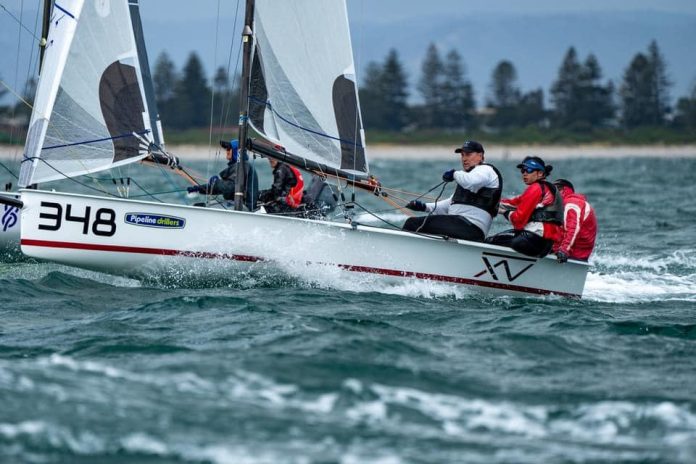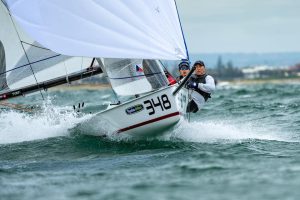

The importance of effective on boat communication. I have just returned from an Australian Championship and after speaking with a number of fellow competitors, it became really evident that the best crews have a communication hierarchy.
On board communication when racing is a key factor for performance. No matter what type of racing you do, when the number of crew increases, it becomes more and more important.
In order to cover as many types of boats as possible I have outlined below communication necessary for different crew members on boats with different crew numbers. Pick out the ones that are relevant for the type of boat you sail.
SAILING TO WIN BOOK AND BONUSES
The helmsperson/skipper
The helmsperson must talk to the trimmers about how the boat feels, the fact that there is too much helm or even negative helm. This feedback enables them to ease sheet or trim on to remedy the problem and keep the boat fast.
The advantage of a boat with a speed indicator is that the helmsperson and trimmers can see that the boat is not sailing at the right speed for the conditions. The skipper can suggest more or less sheet, or for the vang, jib car position or Cunningham to be adjusted to get up to the desired speed.
FREE CHAMPIONSHIP SAILING GLOVES
The Trimmers
Good trimmers should ask the helmsperson frequently about how it feels to make sure the boat is sailing at its full potential.
When sailing upwind, the main trimmer, who is usually the only other crewmember besides the skipper facing towards the middle of boat and sitting next to the helmsman, is constantly talking with helmsman about how the boat feels
When sailing off the breeze, the spinnaker trimmer takes over, keeping the boat in the groove.
They can advise when the kite has plenty of tug or has gone soft and can instruct the helm to heat up or bear off at the appropriate time.
The Tactician
If your boat has a crew big enough to have a separate tactician, they are the one who gives the overall plan. They talk to the whole crew and communicate directly with the helmsman in close quarter situations, such as the start and mark roundings.
The tactician is responsible for where the boat sails through the water, and how it sails, telling trimmer what type of mode is best for the boat.
The Middle Of the Boat – Effective On Boat Communication
Included in the middle are headsail trimmers, grinders when you have them and the pit, which can be multiple people. Communication from this part of the boat is non stop and travels both ways.
The crewmembers on the bow need to know in plenty of time, what the next manoeuvre is going to be. There needs to be instructions from the middle boss so that they have plenty of time to prepare sails or equipment.
Bowman/Woman
This is the member of the crew who operates at or in front of the mast and who deals with the hoisting and lowering of all headsails. They are also responsible for clipping on and helping to douse spinnakers and are instrumental in Gybing spinnakers on symmetrical boats.
Communication coming from the middle or afterguard is crucial, so that there are no crash tacks or gybes without everything being ready.
In really challenging conditions on larger boats hand signals are better than yelled instructions and these are talked about and practiced when training.

